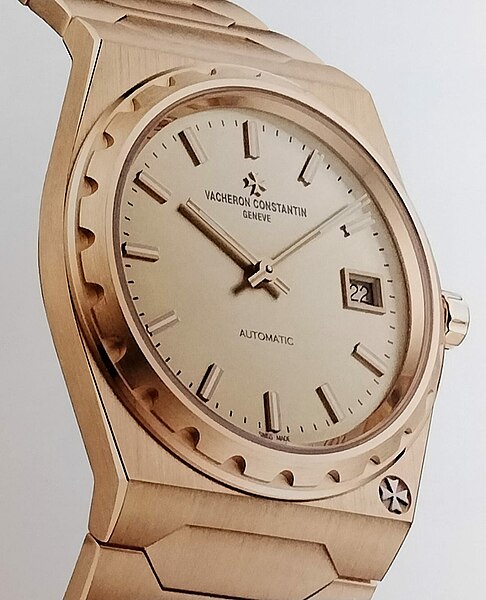
Sales of Swiss-made luxury watches are experiencing a sharp decline as cautious consumers reconsider purchasing expensive timepieces, leading to a slump in one of
the industry's key markets.
Recent figures from Switzerland's two largest publicly traded watchmaking conglomerates, Richemont and Swatch Group AG, confirm a severe, China-led downturn that has also impacted luxury fashion brands such as Burberry Group Plc, Hugo Boss, and Gucci.
The latest results show a double-digit drop in sales, marking a dramatic reversal for an industry that enjoyed an unprecedented boom during the pandemic. At that time, cash-rich clients, unable to spend on travel and dining out, and influenced by flashy social media posts, invested heavily in expensive mechanical watches.
Industry Insights: Six Things You Should Know About the Watchmaking Industry
Top watch brands responded to the surge in demand by significantly raising prices, causing some consumers to reconsider purchasing new watches.
Richemont's watch brands, including Vacheron Constantin, Jaeger-LeCoultre, and IWC, saw a 13% sales drop in the three months through June, driven by a 27% decline in Greater China, as reported on Tuesday. Swatch, which owns Omega, Blancpain, and Breguet, in addition to its entry-level namesake brand, experienced a 30% drop in China sales in the first half of the year. Overall, Swatch's sales fell by 14%, and operating profit plummeted by 70%.
This decline in sales and reduction in production are impacting the industry in Switzerland. Watch component suppliers, who expanded their staff and equipment during the boom, are now facing deferred orders from major Swiss brands. Some components makers have already asked employees to reduce work hours or extend their annual summer holidays.
The watch industry is crucial for Switzerland, employing more than 65,000 workers and ranking as the country's third-largest export sector.
Swatch Group Chief Executive Officer Nick Hayek mentioned in an interview this week that some of his company's watch brands have delayed orders from suppliers amid a 20% to 30% production cut, although the company keeps its own workers employed.
"Some brands that have external suppliers have delayed some orders," Hayek said. "But that’s not only us; this is a general trend throughout the Swiss watch industry."
Monthly Swiss watch export data for June, due on Thursday, will likely reflect the slowdown. After three years of record exports by value, wholesale exports declined by 2.5% in the first five months of 2024, according to the Federation of the Swiss Watch Industry.
While the sector's significant pullback was somewhat anticipated, its scale and scope were surprising. CEOs and industry executives had signaled a slowdown in demand in late 2023, indicating the end of the rush to buy brands like Rolex and Patek Philippe, which had driven much of the industry's growth.
U.S. watch buyers were the primary drivers of the boom, with the country surpassing China as the top destination for exports in 2021. However, China's role as the second-largest importer of timepieces is largely responsible for the current slump. Sales in the U.S. have remained resilient, and retailers in Japan are thriving as tourists take advantage of the weak yen.
Nevertheless, these factors haven't been enough to offset the decline from China.
"We do not see an immediate end to China’s demand woes," said Bernstein analyst Luca Solca in a report following Swatch Group's results.
These challenges are also affecting the broader luxury sector. On Tuesday, German high-end fashion brand Hugo Boss reduced its profit guidance for the year, citing weakness in markets such as China. Its shares dropped to their lowest level since 2021.
The New Chic: Pre-Loved Watches
With the rise of e-commerce and retro fashion trends, watches are finding a second life around new wrists.
The slump in new watch sales follows a dramatic correction in the secondary market since prices peaked in 2022.
According to a report this month by Morgan Stanley and WatchCharts, prices for the most traded models fell 2.1% in the second quarter of 2024, marking a ninth consecutive decline.
WatchCharts data shows that prices for used watches from all major brands fell. Watches from the luxury conglomerate LVMH, including Tag Heuer, Hublot, and Zenith, saw the biggest drop at 3.6%. An index of used Rolex models fell by 2.2%.
The value retention of Rolex watches in the secondary market has been a key differentiator for the top Swiss brand in recent years. However, even this is starting to falter. According to WatchCharts data, only 63% of Rolex models are trading above retail prices on the secondary market today, compared to 72% a year ago.
"It’s unlikely that secondary market prices will stabilize in the near future," Morgan Stanley analysts led by Edouard Aubin said in the report, citing the exit of speculators and worsening value retention for many Swiss watches.
Morgan Stanley predicts that primary market watch sales will fall by about 5% this year.
"With the increasingly symbiotic relationship between secondhand prices and new watch prices," the Morgan Stanley analysts said, "the pressure on the secondary market is reducing the pricing power of the leading Swiss watch brands."








































